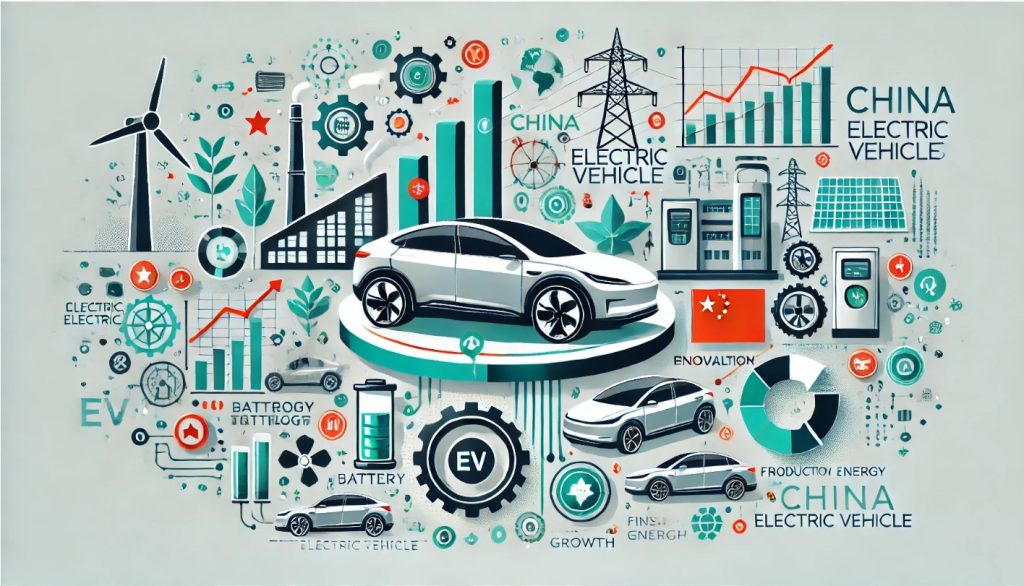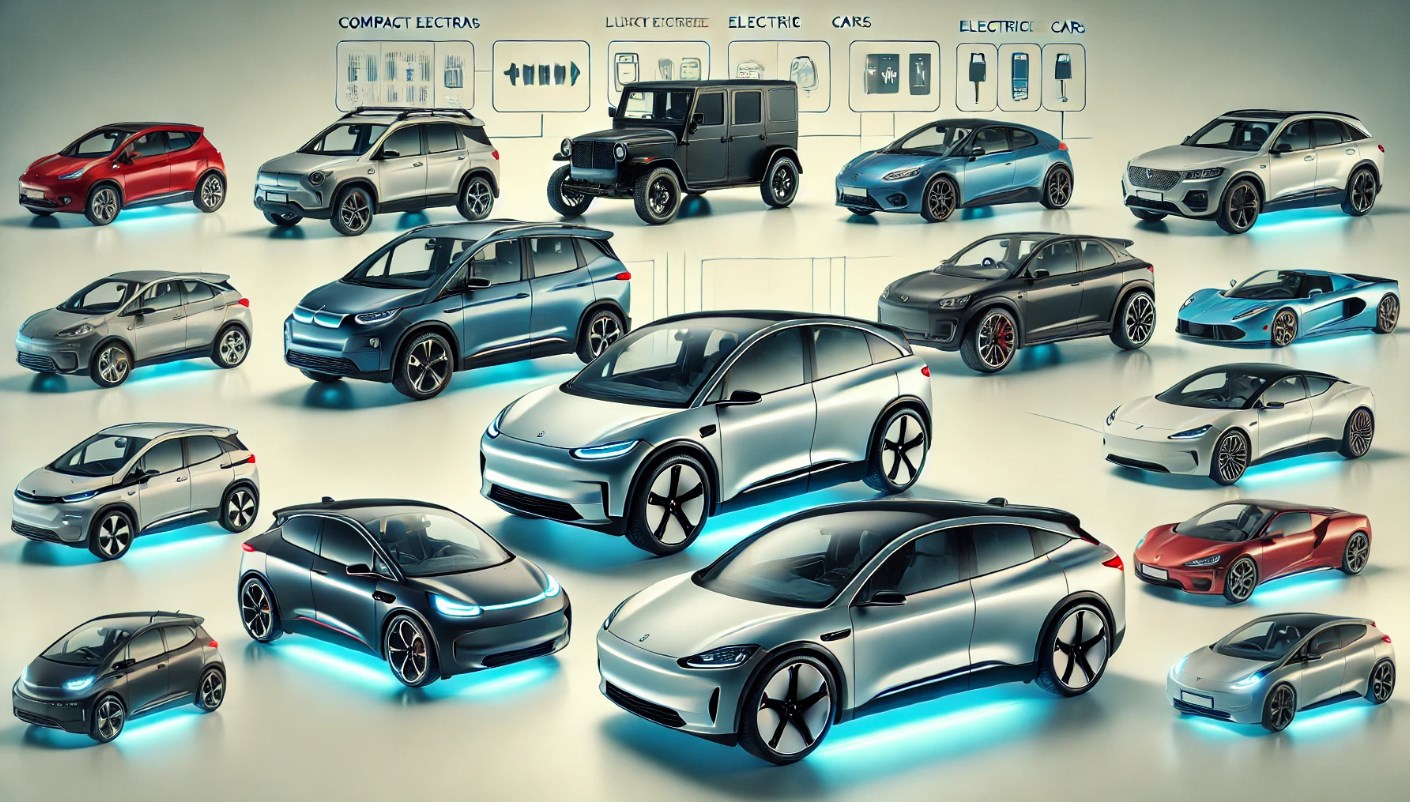In recent years, China has emerged as a global leader in the electric vehicle (EV) market, both in terms of production and consumption. With a large population, rapid urbanization, and a pressing need to address environmental concerns, China’s electric vehicle industry has grown exponentially. The government’s strong policy support, technological advancements, and the rising demand for cleaner transportation options have combined to create an ecosystem where the EV sector can thrive. This rapid expansion is not only reshaping China’s automotive landscape but also setting the stage for a global transformation in the transportation sector.
The scale of China’s EV market is staggering. By 2023, China accounted for more than half of the world’s electric vehicle sales. The industry’s development is a result of multiple factors, including economic incentives, infrastructure development, technological breakthroughs, and changing consumer attitudes towards sustainability. China’s electric vehicle industry is poised to become a key driver of global environmental change and technological innovation.
Government Policies and Initiatives
Strategic Plan for the EV Sector
China’s government has played a pivotal role in fostering the growth of the electric vehicle industry. Beginning in the early 2000s, the government introduced several strategic initiatives designed to boost EV production and consumption. These policies have included direct subsidies, tax incentives, and the establishment of infrastructure for EV charging networks. In 2015, China’s “Made in China 2025” plan further cemented the importance of EVs within the nation’s broader industrial strategy, aiming for China to become a global leader in advanced technologies, including electric vehicles.
The government has consistently provided financial support to both consumers and manufacturers. In addition to subsidies for purchasing EVs, there are also significant investments in research and development, which have allowed Chinese manufacturers to develop competitive, cost-effective, and technologically advanced vehicles. Moreover, the Chinese government has placed a strong emphasis on the creation of a nationwide EV charging infrastructure, making it easier for consumers to adopt electric cars.
Fuel Efficiency and Emissions Regulations
As part of its broader environmental policies, China has also implemented stringent fuel efficiency and emissions regulations. These regulations incentivize manufacturers to reduce their carbon footprints and focus on green technologies like electric powertrains. For example, China introduced its “Dual Credit” policy, which requires automakers to meet certain fuel economy targets while promoting the production of new energy vehicles (NEVs). These regulations not only help reduce greenhouse gas emissions but also drive investment in green automotive technology.
The enforcement of such standards has placed pressure on traditional internal combustion engine (ICE) vehicle manufacturers to invest in electrification. This, in turn, has created a favorable competitive environment for EVs, helping to accelerate the transition to a low-carbon automotive sector.
The Growth of EV Production in China
Leading Manufacturers in the Chinese EV Market
Several Chinese automakers have emerged as key players in the global electric vehicle industry. Notable companies include BYD, NIO, Xpeng Motors, Li Auto, and Geely. These companies have benefited from government subsidies and have aggressively expanded their production capabilities in response to rising domestic and international demand for electric vehicles.
BYD, for instance, is one of the largest electric vehicle manufacturers in the world. Originally a battery manufacturer, BYD transitioned into EV production and now produces a range of electric cars, buses, and trucks. In addition to traditional passenger vehicles, BYD has become a leader in the production of electric commercial vehicles, including buses and trucks, which play a crucial role in China’s efforts to reduce urban air pollution.
NIO and Xpeng Motors, both established as EV startups, have also attracted significant investment, allowing them to produce premium electric vehicles that compete with traditional automakers like Tesla. NIO’s ES6 and Xpeng’s P7 have garnered attention for their cutting-edge technology, autonomous driving features, and strong performance. These companies exemplify how China’s EV industry is attracting global attention for its innovation, which rivals that of the world’s most established automotive manufacturers.
Technological Innovation and R&D Investment
Chinese automakers are heavily investing in research and development to enhance the performance, affordability, and range of electric vehicles. Chinese EV companies are focusing on advancing battery technology, charging solutions, and autonomous driving capabilities. One area of significant innovation is the development of solid-state batteries, which promise greater energy density, shorter charging times, and enhanced safety features compared to traditional lithium-ion batteries.
The Chinese government’s investment in battery research is another critical factor driving technological advancements. China is home to the world’s largest battery manufacturers, such as CATL and BYD, which supply batteries to both domestic and international EV makers. As of 2023, CATL held the title of the largest EV battery producer globally, supplying batteries to companies like Tesla, BMW, and Volkswagen.
Consumer Adoption of Electric Vehicles
Changing Consumer Preferences
The growing popularity of electric vehicles among Chinese consumers can be attributed to several factors, including increasing environmental awareness, government incentives, and a shift toward more sustainable lifestyles. In cities like Beijing, Shanghai, and Shenzhen, EVs have become a common sight on the roads due to the convenience of government incentives and the rapidly expanding charging infrastructure.
The price of EVs has also become more competitive. Thanks to subsidies and advancements in battery technology, the cost of electric cars has decreased significantly in recent years, making them more accessible to a broader range of consumers. At the same time, the driving range of electric vehicles has improved, addressing one of the primary concerns of early adopters.
Chinese consumers are also becoming more tech-savvy, with many looking for vehicles that incorporate the latest advancements in autonomous driving and connectivity. As a result, Chinese EV brands like NIO, Xpeng, and Li Auto have positioned themselves as technology-driven companies, offering features like autonomous driving, over-the-air software updates, and large, interactive screens that appeal to the tech-conscious consumer.
Charging Infrastructure and Convenience
The development of EV charging infrastructure has been a cornerstone of China’s push toward electric mobility. Over the past decade, the Chinese government and private companies have worked together to create a nationwide network of EV charging stations. As of 2023, China had more than 3.5 million charging points, accounting for over 60% of the world’s total charging stations.
This extensive charging network has made it easier for consumers to adopt electric vehicles, as charging becomes more convenient and accessible. The government has also worked on establishing fast-charging stations along major highways, enabling long-distance travel for EV owners. As EVs become more mainstream, the growing charging infrastructure will continue to support their adoption across the country.
Environmental and Economic Impact of EVs
Reducing Carbon Emissions
One of the primary motivations behind China’s investment in electric vehicles is the desire to combat air pollution and reduce carbon emissions. As the world’s largest emitter of greenhouse gases, China faces significant pressure to transition away from fossil fuels and adopt cleaner forms of energy. The adoption of electric vehicles is seen as one of the most effective ways to reduce emissions in the transportation sector, which is a major contributor to urban air pollution.
EVs are powered by electricity, which, in China, is increasingly derived from renewable sources like wind, solar, and hydroelectric power. As the grid becomes cleaner, the carbon footprint of electric vehicles continues to shrink, making them even more environmentally friendly. In addition to the environmental benefits, EVs also contribute to reducing noise pollution, particularly in urban areas, improving overall quality of life.
Economic Opportunities and Job Creation
China’s electric vehicle industry has created numerous economic opportunities. From manufacturing to R&D, the sector has generated millions of jobs. China is now home to some of the world’s largest battery manufacturers, electric vehicle assembly plants, and technology developers. As the industry continues to grow, it is expected to create even more employment opportunities across various sectors, including battery production, software development, and EV-related services.
The Chinese government’s support for the electric vehicle industry has also fostered the growth of small and medium-sized enterprises (SMEs) within the supply chain, including manufacturers of charging equipment, battery components, and software solutions. These SMEs are crucial to the development of a diverse and competitive EV ecosystem, providing a range of services and products that are essential to the industry’s success.
Challenges Facing China’s EV Industry
Supply Chain Constraints
Despite its rapid growth, China’s electric vehicle industry faces several challenges, particularly within the supply chain. One of the biggest obstacles is the dependence on raw materials like lithium, cobalt, and nickel, which are essential for EV batteries. China is the world’s largest importer of these materials, and supply chain disruptions, geopolitical tensions, or price fluctuations could hinder the growth of the industry.
To address these challenges, China has been making strategic moves to secure long-term access to these critical materials. The government has encouraged Chinese companies to invest in mining operations overseas, while also promoting the recycling of used batteries to reduce dependence on new raw materials.
Competition and Global Expansion
China’s EV market is highly competitive, with both domestic and international players vying for market share. While companies like BYD, NIO, and Xpeng have established themselves as leaders in the Chinese market, they face increasing competition from global giants like Tesla. Tesla, in particular, has seen significant success in China, benefiting from the country’s strong demand for EVs and the presence of its Gigafactory in Shanghai.
As Chinese companies look to expand internationally, they will face challenges related to brand recognition, consumer trust, and regulatory hurdles in foreign markets. However, many Chinese EV manufacturers are already making strides in Europe and Southeast Asia, where demand for electric vehicles is rising.
Consumer Perception and Adoption Barriers
While China has made significant progress in adopting electric vehicles, there are still barriers to broader consumer adoption. Some consumers remain hesitant to make the switch from gasoline-powered vehicles due to concerns over the driving range, charging infrastructure, and the availability of replacement parts and services for electric vehicles. Additionally, there is still a perception among some buyers that EVs are not as reliable or durable as traditional vehicles.
To overcome these barriers, automakers will need to continue improving battery technology, offer more affordable models, and educate consumers on the benefits of EVs. As more people experience the advantages of electric vehicles, such as lower maintenance costs and quiet operation, these barriers are expected to gradually diminish.
Future Outlook for China’s EV Industry
Technological Advancements
Looking ahead, China’s electric vehicle industry is poised to continue its rapid expansion. The government’s continued support for EVs, coupled with advancements in battery technology, will likely lead to more affordable and efficient electric vehicles. The development of next-generation batteries, such as solid-state batteries, could significantly improve the performance and safety of EVs, making them even more appealing to consumers.
Additionally, China is focusing on the integration of EVs with smart grid technology and renewable energy sources, which will enable more efficient charging and energy storage. The rise of autonomous vehicles and AI-powered transportation networks could also reshape the EV industry, creating new opportunities for innovation and growth.
International Expansion
Chinese EV manufacturers are likely to expand their presence in international markets, leveraging their competitive pricing, advanced technology, and established manufacturing capabilities. In markets such as Europe, Southeast Asia, and North America, Chinese companies are already beginning to establish themselves as formidable competitors to traditional automakers.
The continued success of Chinese electric vehicles on the global stage will depend on how effectively these companies can navigate local regulations, consumer preferences, and the competitive landscape. However, given the scale of China’s EV market and its manufacturing capabilities, it is likely that the country will remain a dominant player in the global electric vehicle industry for years to come.






